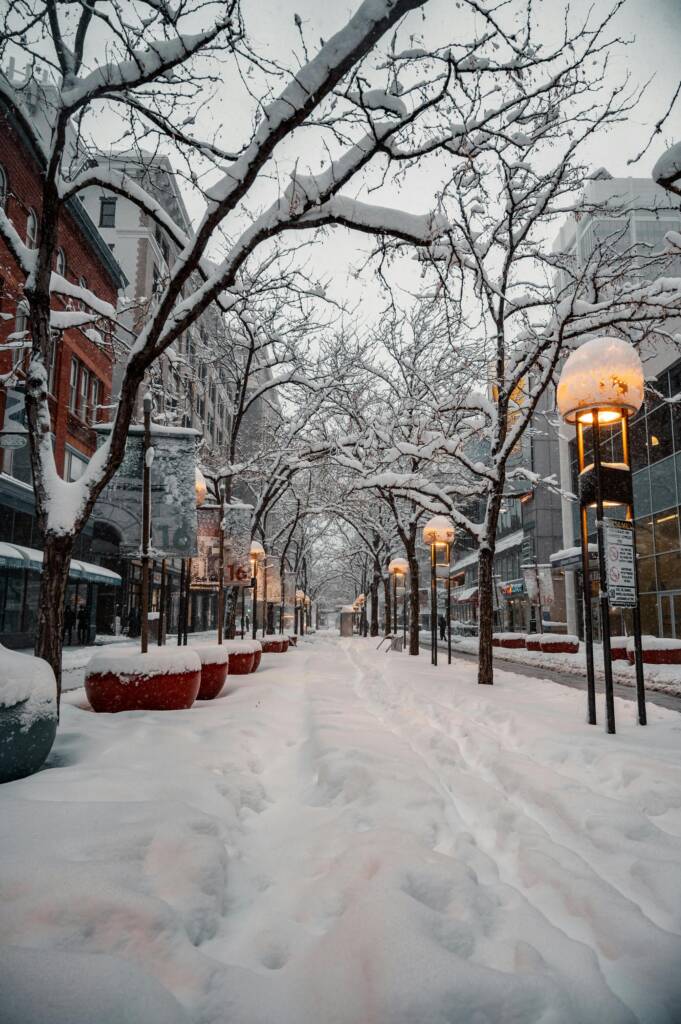Protecting Your Landscape Through Colorado’s Harsh Winter Months
Winter in Colorado can be tough on your landscape. With dry air, low precipitation, and fluctuating temperatures, maintaining the health of your trees, shrubs, lawns, and perennials requires extra care. One essential step to ensure your plants survive and thrive through the colder months is proper winter watering. Without adequate moisture, plants are at risk of root damage, which can impact their growth and overall health in the long term.

The Importance of Winter Watering
Between October and March, Colorado often experiences long periods of little to no precipitation. Snow cover is minimal, and the soil dries out quickly due to low humidity and temperature swings. While plants may appear dormant during this time, their root systems are still active and require moisture to function properly.
Without supplemental watering, the roots of trees, shrubs, and lawns can sustain damage that might not be immediately noticeable. By spring, these weakened plants may struggle to grow, and parts of their root systems could die off entirely. Over time, this damage can lead to insect infestations, diseases, and even plant death during the hotter months. Winter watering helps prevent these issues, ensuring your plants remain healthy and vibrant year-round.
Signs Your Plants May Need Winter Watering
If you notice any of the following signs, your trees, shrubs, or lawn may be suffering from insufficient moisture during the winter:
- Loss of foliage or premature leaf drop
- Slow or stunted growth in spring
- Poor color development in trees and shrubs
- Increased insect infestations
- Higher susceptibility to diseases, such as needle blight or cankers
- Damage to lawns, particularly in newly planted or exposed areas
How Winter Watering Benefits Your Landscape
- Prevents Root Injury: Prolonged dryness during the colder months can damage root systems, making it difficult for plants to recover when spring arrives. Winter watering keeps roots hydrated, preventing injury and promoting healthier growth.
- Enhances Plant Resilience: Well-hydrated plants are better equipped to withstand environmental stressors, such as pests, diseases, and fluctuating temperatures.
- Promotes Longevity: Providing consistent care through winter strengthens plants, allowing them to thrive year after year.
- Supports Spring Growth: By ensuring your plants receive adequate moisture, you’re setting them up for vigorous and healthy growth when warmer weather returns.

Our Winter Watering Process
1. Strategic Watering
2. Mulch Application
3. Custom Solutions
4. Comprehensive Care

Why Choose American Tree for Winter Watering?
When it comes to protecting your landscape during Colorado’s dry winters, you need a team you can trust. American Tree is committed to providing exceptional service and results.
✅ Expert Knowledge
Our team has extensive experience with Colorado’s unique climate and knows how to care for your landscape effectively.
✅ Eco-Friendly Practices
We prioritize environmentally responsible solutions that protect your plants while conserving resources.
✅ Personalized Service
We take the time to understand your needs and develop customized plans for your property.
✅ Free Consultations
We offer free estimates and evaluations, ensuring you have all the information you need to make the best decision for your landscape.
Protect Your Landscape This Winter
Don’t let Colorado’s harsh winter conditions damage your trees, shrubs, and lawn. With proper winter watering, you can safeguard your plants and ensure a vibrant, thriving landscape for years to come.
Contact American Tree today to schedule your free consultation and estimate!
Let us help you maintain a healthy and beautiful outdoor space, even during the toughest seasons.
American Tree was great to work with. Their quote was competitive and honest. The job was clean and quick. I would use them again.
Kim Davis
Troy and his crew did a TON of work at our place this Spring and finished it in one day. A couple of our trees that were struggling and had a lot of dead-looking branches were treated with extra care. The crew cleaned up the yard nicely, even using a blower to get the dust off the patio. Great work!
Golden Pro
We’ve been using American Tree to fertilize our trees and shrubs for at least 10 years. Great value for their awesome service!
Pat Tully
Great company! Great service! Great prices! The owner is a really nice man.
JJ
Always great
Susanne Snody
Such knowledgeable and polite technicians. They show up, they know what they are doing, they are affordable and most of all they give you an honest answer if your trees will make it. I will always use them gong forward.
David Beczkalo
Brett, James and Zach trimmed our Locust and Spruce trees and did an amazing job! This crew has a wealth of experience and knowledge. They had the job completed promptly and thoroughly – we are very pleased. We highly recommend American Tree – thanks very much for your great service!
JCB
I used American Tree to prune and clean up an ash tree that had been really neglected. They trimmed it up to look fantastic. Cleared out all the dead and gave it a great canopy again. Cleaned up everything and were very professional. Will use them again.

